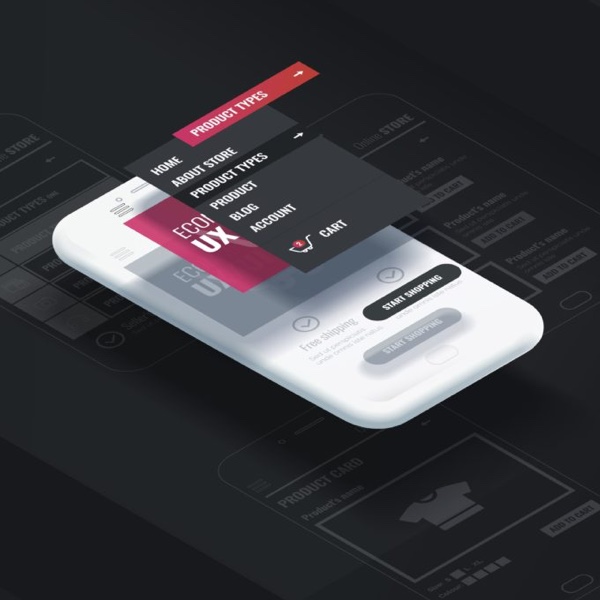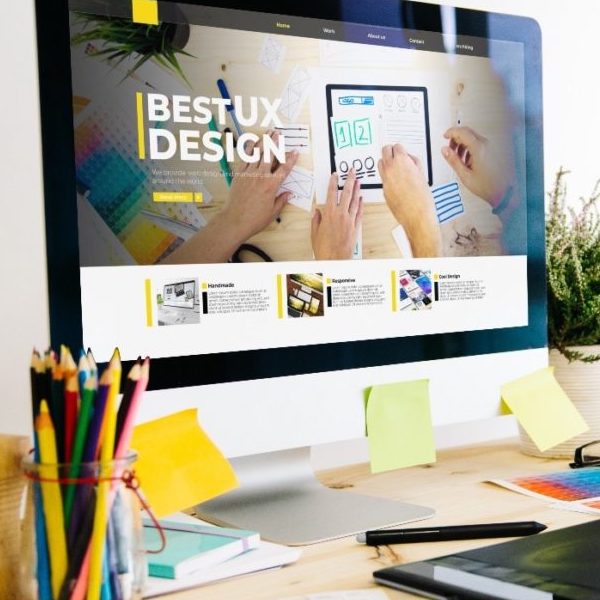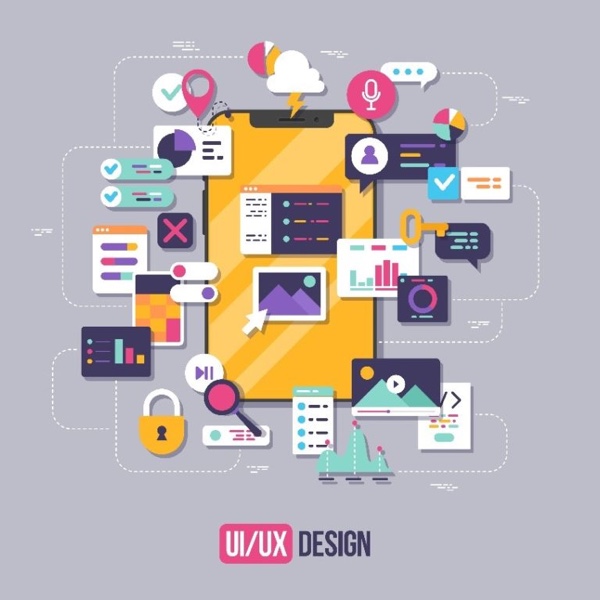If you’re looking to improve how you do business, you’ll have greater success with a solid Solution Design Process. Designing an ideal solution is defined here as reaching set goals and objectives by creating a successful user experience. A project’s success depends on a well-thought-out design that ultimately provides guidance and clarity to developers. So, as the first phase of software development, design is the blueprint for what is to be built. Demonstrating the why and how something should work is at the heart of every design. But getting a design right the first time is nothing short of a miracle, which is why the process is cyclical and includes testing and improvement phases. In short, taking the right steps at the beginning is critical, especially if you’re looking for a successful Solution Design Process.
Start with an amazing designer team.
The best UX designers put the user’s experience at the top of their solution design priorities. But they not only excel in the technical aspects of their role but also master important “soft skills.” So, although wireframing and prototyping are part of the process, soft skills like curiosity, empathy, collaboration, and communication are essential. Curiosity, for example, is what fuels the ability to engage with users and problems. The combination of these soft skills and technical skills is what exceptional designers are made of. Understanding how people process information, empathizing with users, and identifying a process with clarity define heroes of the design world.
TIP:
It’s important to stay on top of the ever-changing field of UX. Designers should always research what’s new, what’s hot, and what’s not. Getting behind the curve on the latest developments could doom the most-promising of projects.
Use the right tools for best results.
Talented UX designers need the right tools to get the job done! They’ll need visualization supplies like lots of sticky notes and markers to record ideas and sketch. A whiteboard is also useful. Plus, they’ll need wireframing and prototyping tools for visual and interactive user flow mock ups. These technical tools help the communication process between designers, project managers, and developers. It can also help reduce time and costs on a project. But designers will also need access to users. This is important to conduct interviews and user testing. Choose users from each department of the business to get as many scenarios as possible.
TIP:
There are a ton of choices out there for design tools. Research authoritative articles to get a list of the top-rated wireframing and prototyping options. Explore the features of each to see which tools best match your needs. Then do the research and check out reviews. Download free tools and try a sample project. The right choice could save you a lot of time and help you to avoid frustration.
Define a real need.
Define it! Before the UX/solution designer begins, extensive business research should be completed to identify the need. What problem exists? Why is solving this problem important? Who will benefit from its resolution? Are competitors experiencing this same problem? Do solutions exist that solve the problem? Discovering opportunities for a design is what the business research should accomplish.
TIP:
Defining a need may not always be about a problem. Maybe your business processes are humming along but they could use some improvement. If that’s the case, ask yourself how such an improvement will impact the overall work flow or customer experience. Then, explore how one change or improvement will create opportunities to enhance other areas. For example, will the change provide a more efficient way of managing transactions? If implemented, will the improvement eliminate the need for manual work or reduce paperwork? Even better, will the change increase sales or lower operational expenses?
Determine all requirements.
Look at the project from its main parts or high-level features to determine what encompasses the complete product. It’s like taking an aerial view of the project to be sure you are getting the whole picture. For example, Human Resources software might include onboarding, employee management, payroll, etc. Next, you’ll need to create user personas of any user who influences the software. It’s important at this juncture to include any direct or indirect business requirements. Considerations such as time and budget, scalability, maintenance, and others can dictate design direction.
TIP:
Breakdown a project by its functionality. What department does what? What main function(s) is each department responsible for? Does one high-level feature directly affect another? Are there any commonalities in how things are done within the project’s main parts? Is there overlap in procedures? Understanding how each part or feature shares common goals and affects other parts will help avoid issues down the road. Compatibility and integration with other software is also critical and should be considered on the onset of a project.
Do the homework (user research).
The more you know about users and their journey the better. Performing user research is crucial to establish viable solutions. It’s important to put yourself in their shoes and walk the walk to make sure you understand the pain points. Begin by interviewing users. What are users trying to do? And what goals are they hoping to reach? What are expectations? Answer to these questions will establish user stories. Create user flow diagrams to map out how they will connect with the software including all goals and tasks for the software. Once user goals are established, take a look at the competition and what may already exist that solves the problem or is relevant.
TIP:
Your business research should determine all the potential users for your project. Not considering every possible type of user may prevent you from developing a successful Solution Design Process. Leaving out potential scenarios prevents future opportunities and potential growth for the business using your software.
Start the brainstorming and let the fun begin!
The importance of brainstorming at this point in the design phase can’t be understated. Think about a math problem and how many ways you can reach a solution. Now think about having more than one potential solution to the problem. The number of viable options may even surprise you. And inevitably, something comes up that you haven’t even thought of. Maybe a new audience for your software or different scenario surfaces that will require tweaks.
So, now let the fun begin! Because there may be more than one solution to any problem, it’s a good idea to get many perspectives. Gather up a group of bright minds from different departments and levels to come up with ideas, crazy or not! If successful, you should end up with one or many solutions to all the problems/goals. And don’t forget to accurately record the session to be sure you have the details about what was discussed.
TIP:
Pull together an effective brainstorming team of about 5 members. The more diverse the group, the better the results. Like-minded people are not the goal here. The best team will include people with different skillsets. They do not need to be dedicated to the project but should be available for hour-long brainstorming sessions. You might be amazed at what this small, but mighty group can accomplish.
Create a great prototype.
After looking at various solutions to the problem, one will likely stand out as being the best approach. But keep all solutions close at hand as you may need to go back and consider all or part of them at any time. Ultimately, you need to go back to your user stories and make sure you have a viable solution for each. But if you can’t decide on one solution for a user story, include all solutions. Then create a prototype that is interactive, usable, and is ready for testing.
TIP:
You’ll reduce the amount of reworking that needs to happen in the product’s final phase with prototypes and user testing. You don’t want to take shortcuts here! Prototypes validate a concept or process. It gives users a real-life model or release that will help explain how it works by letting users experience it for themselves.
Test, improve, and repeat.
It’s time to try it out on users! Testing is the most important way to see if your concept has merit and really works! So, make the most of every session with each user. Provide each user with a list of tasks to complete and listen as they tell you what they think. Find out what is confusing or unclear. And give them a questionnaire to fill out when they are finished. Analyze the testing and check off if each goal was met. It’s a good idea to rate each goal on clarity and ease of use. If any low scores show up, pull the brainstorming group back together to review test results and come up with a new solution for each low-scoring goal.
A truly amazing design rarely (if ever) happens with the first go around. The more you personally work with a design, the more likely it is for your brain to bypass its flaws. And you may not realize what is missing or what’s preventing it from being the best it can be. So, getting feedback on your prototype is crucial. Once you’ve taken the time to analyze the test results, it’s time for improvements. Create a new prototype you can test and if needed improve and continue iterating until all solutions and user tests are satisfactory. Then get ready to start the process all over again, and again, and again, if necessary! Whatever it takes to get it right!
TIP:
Successful prototypes should be a close representative to the final product or process. The idea is to bring your idea to life to help users realize its true value or flaws during testing. Don’t try to fudge at this phase of design. Make sure you’re using the right tools designed for your type of product. The right tools are a big part of the success of any design solution process.
Achieving the best result.
Building high-quality software begins with a talented team of designers and engineers. Supporting them with all the tools they will need to succeed is huge. And the reward is an exceptional product or process that’s gone through rigorous testing and series of improvements to prove its superiority. And when all is said and done, the implementation of a reliable design solution process made it all possible.
At Bitbean, we will stop at nothing to ensure the custom software we build is right on point and does what it is designed to do. This is the reason we take pride in assembling the brightest minds in the business and use a proven design process that yields the best results. And it all starts with a successful and effective Solution Design Process.
Find out how Bitbean “builds software for ambitious companies striving to be industry leaders.” Contact us today.







